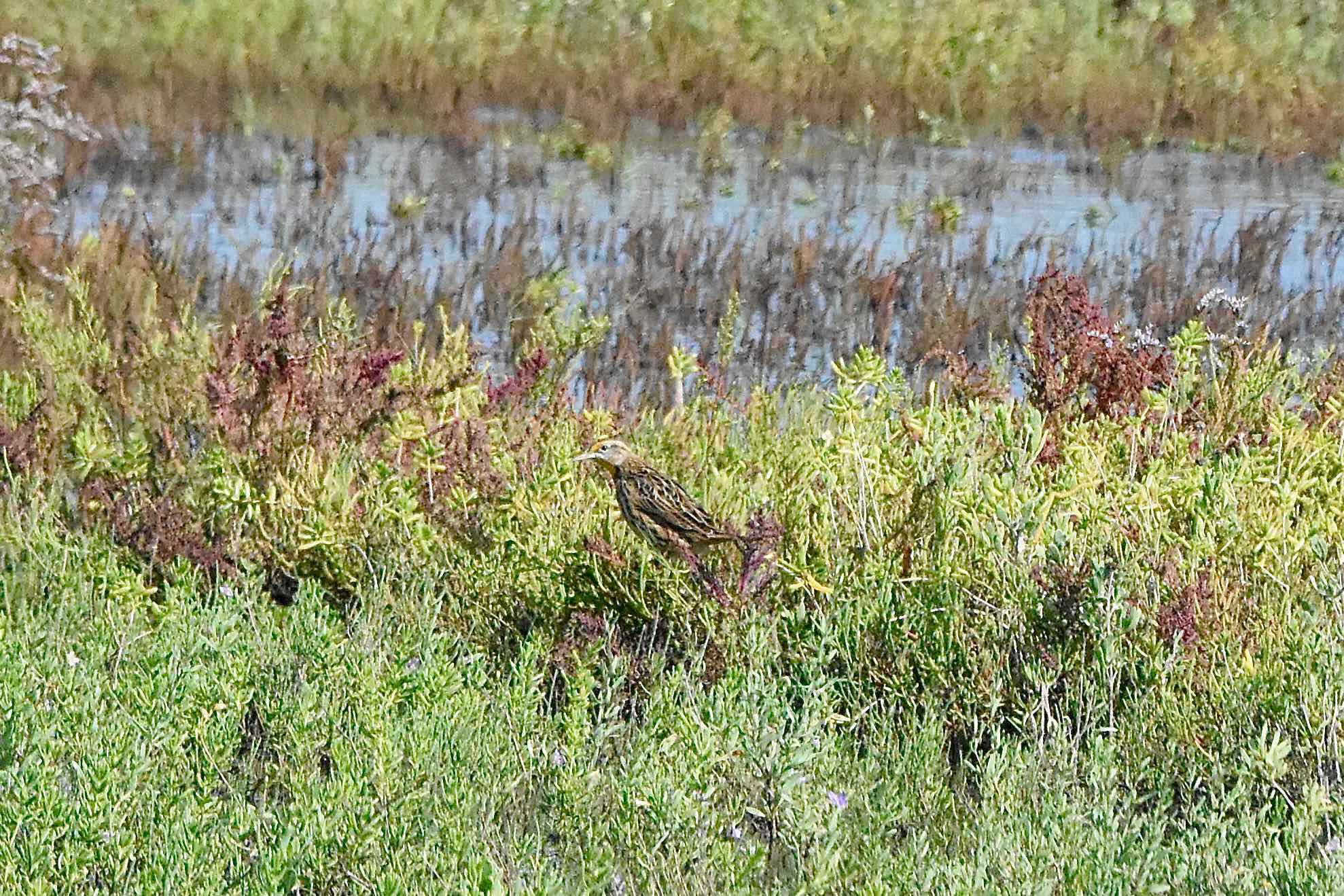
King rail, photographed at Aransas National Wildlife Refuge, Aransas, Texas, in October 2019.
The king rail, Rallus elegans, gets its name from its size — it is the largest of all North American rails, a group of marsh-dwelling birds that includes moorhens and gallinules.
It’s a year-round resident of Florida and found throughout the state, but a rather rare one. And one that tends to be secretive in its ways and inhabits places that are difficult for us humans to get to, which makes spotting one even more difficult.
They are large, with a body length between 15 and 19 inches and a wingspan that can exceed two feet. It’s rust-colored, with a long, slightly downwardly curved bill that’s two-toned — dark above, a dull orange below. The neck is rather long but thick. The back is a mottled mix of light and dark browns; the flanks are brown with white vertical striping, or barring, mixed in. They also have a habit of cocking or flicking their tail.
Kings are vocal birds, more often heard before seen, so learning and listening for its calls and songs can be helpful in spotting one.
King rails’ range extends across much of the eastern United States and into southern Canada. It’s most common along the coastal plain that runs from Mexico and southern Texas through Florida and along the Atlantic as far north Maryland and Delaware. It is a year-round bird within that territory but migratory farther north and farther inland. Its occurrence is also spotty farther inland because of its reliance on marshy habitats.
In Florida, it’s found throughout the state, though probably more so in the central and southern part of the Peninsula, particularly in the Everglades.
Florida’s population also gets a winter-time boost from migrating king rails.
King rails are similar in build and looks to clapper rails. Kings, however, tend to hangout more in freshwater marshes and clappers in salt. The two birds overlap in brackish water marshes, and they do hybridize. Clapper rails are darker over all, with a mix of grays and deep browns that kings don’t have.
Kings are sleekly built, perfect to slip secretively through marsh vegetation as they forage for a meal. On their menu: aquatic insects, slugs, crayfish, tadpoles and frogs and fish. They’ll also mix in some plant stuff.
They are ground nesters, building platforms, or mounds, of cattails or rushes sitting above the water. King rails will bend surrounding plants over the nest to form a canopy of sorts that prevents predator birds from spotting it from above. The nest will be lined with grasses and other softer material.
Females lay clutches of 10 to 12 eggs that require three weeks of incubation. Both parents perform sitting duties. The offspring, which are black, fledge in about 9 weeks. In Florida, King rails nest as early as January but mostly between February and June, according to the Florida Fish and Wildlife Conservation Commission. Pairs will have a second brood.
Because of their secretive ways, it’s tough to get an accurate read on the king rail population, but it’s believed to be in significant decline. Twelve states list it as either threatened or endangered. It is not federally listed, but it is protected under the Migratory Bird Treaty Act of 1919. There are some states that allow it to be hunted.
Major threats include loss of habitat and habitat degradation from farm run-off.
King rails are members of Rallidae, the rail family.
